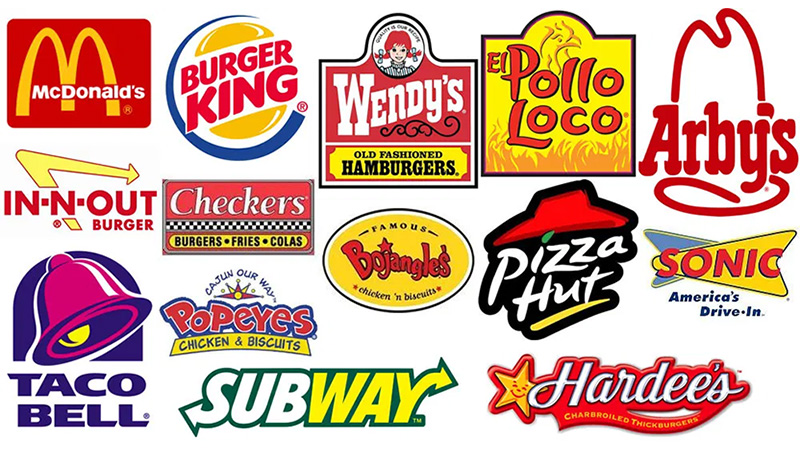The Importance of Colors in the Psychology of Marketing
Colors are an important aspect of content marketing. It represents the emotional cue, evoking the responses we want from the people we want to engage with. It’s what attracts our audience to look at it, feel what we want them to feel, and ultimately, do what we want them to do – buy, click, share, link, subscribe, etc.
Selecting colors can negatively or positively impact how your audience perceives your messages. The way color impacts the way we think and conduct ourselves is because colors put content into context. It enables the brain to process how to react. While all of us don’t react the same way to colors, we all have had past experiences with specific colors that have a common generality about them, and this is what we will be looking at today – how this common generality is perceived and how they impact your visual content.

-
Red
The color red is known to be a dynamic, bold, and powerful color. It replicates our physical needs of showing love and affection or portraying distress, danger, terror, or survival. It’s an energizing color, and at the same time, it shows aggression. What tone you use and in what setting enables you to communicate the psychology of red to your audience’s mind. If you’re looking to get someone’s attention fast or if you want to create a powerful presence, add red. Many famous brands use red as the official color, such as Coca-Cola, 3M, Netflix, and Virgin Airlines.
-
Orange
Another bold and vivid color, orange has an interesting psychological perception. It combines the power and energy of the color red and the friendliness, fun, and brightness of the color yellow. Orange, thanks to this mix, is always seen as a positive color and represents physical comfort, food, shelter, and warmth. Orange is also known as a good color to increase appetite as seen on Fanta and Crush, create positive attitudes (TNT), instill motivation, and have a general zest and enthusiasm for life (The Home Depot).
-
Yellow
The color yellow also has very positive connotations toward it. It symbolizes optimism and hope, joy, happiness, and cheerfulness. It’s also used to represent a warning or to signal attention. Despite its sunny disposition, yellow has a powerful psychological attraction. It’s the easiest color visible to the human eye, and it’s also the first color that babies respond to. Post-Its and National Geographic are among the big brands that use yellow in their branding.
-
Green
The color of balance and harmony. It’s the most often seen color! You see green everywhere simply because it’s also the color of nature. Green is often used to depict the balance of emotional and logical sense. Green is, of course, the color of growth, such as income, wealth, and plants. Spas, rejuvenation centers, and wellness clinics use green to exude a feeling of rest, health, and relieving stress.
-
Blue
Blue is often known as colors for trust, reliability, and dependability. Brands such as PayPal, Visa, Craftsmen IND, Skype, and Ford use blue. It’s the most liked and commonly used color, especially among brands. Blue also has a positive mental reaction as it evokes the feeling of calm and serenity even when there’s chaos. It’s like a piece of blue sky among grey clouds. Blue is a positive color and is often used in marketing and building relationships.
-
Purple
When you look at purple, you get the feeling of inner peace, spirituality, and Zen. This is why many yoga centers adore the color purple, as it creates a sense of wonder and the flow of energy between the powerfulness of red and the reliability of blue. Purple is also the color of royalty, luxury, and courage. It’s both soothing and intriguing. Hallmark is one such popular brand that embodies the sense of the color purple.
-
Pink
Compassion, unconditional love, and understanding are what pink portrays. It invokes a sense of nurturing and caring, which is why brands like Benefit Cosmetics, T Mobile, and Hello Kitty use pink. Pink is also the color for breast cancer awareness, as it’s also a color of hope.
-
Brown
One can’t deny that brown isn’t a very common color used, especially in terms of branding. Brown’s psychology of color states that it’s the color of security, structure, and protection, which is why Godiva, UPS, and Cracker Barrel use this color to create a sense of legacy, family, friends, and constant support. This color is also down to earth and serious, and is perfect to use if you don’t want to be too intense. Brown is a favorite color among coffee brands and coffee shops.
-
Gold
Depending on the culture, gold has different depictions. We can all agree that gold represents luxury, treasure, charm, and confidence. It’s a favored color to depict prosperity. However, gold is often used alongside other colors such as black, white, grey, and even blue, often used sparingly to tone down the sense of pride, self-righteousness, and ego.
-
Black
Black is known as the color of control and seriousness. It represents independence and sophistication, but it can also mean to depict evil, depression, and death. It’s a reserved color and often used to complement other colors (gold, for instance). That said, black is often used in branding for its simplicity and minimalism. Brands like Adidas, Gucci, and Chanel use black.
-
White
The opposite of black, white is known as cleanliness, innocence, peace, and purity. It also represents a blank slate, new beginnings, and refinements. White is seen as an equal balance of all colors, but too much white can also mean emptiness, isolation, and loneliness. There aren’t many brands that use perfect white. Instead, brands like Apple, Lexus, and Nissan use an off-white almost silver color palette. Like black, white is often a complementary color and is also used for minimalism and simplicity.
How you use these colors, whether on their own or with other colors, depends on the intentions you want your brand to personify. Clever use of colors will do marketing across cultures and different regions.


